needlepoint stitches pdf
Needlepoint stitches are the foundation of this traditional craft, offering versatility and creativity. From basic tent stitches to complex combinations, they transform canvas into stunning designs. PDF guides provide step-by-step tutorials, making it easy to master various techniques for beginners and experienced stitchers alike.
1.1 What Are Needlepoint Stitches?
Needlepoint stitches are the building blocks of this traditional craft, used to create intricate designs on canvas. They involve specific thread movements that form patterns, textures, and images. From basic tent stitches to advanced combinations, these stitches are versatile and adaptable. Whether for backgrounds, motifs, or details, each stitch serves a unique purpose. PDF guides and tutorials are excellent resources for learning these stitches, offering step-by-step instructions and diagrams. Understanding needlepoint stitches is essential for mastering the craft and bringing your creative vision to life on canvas.
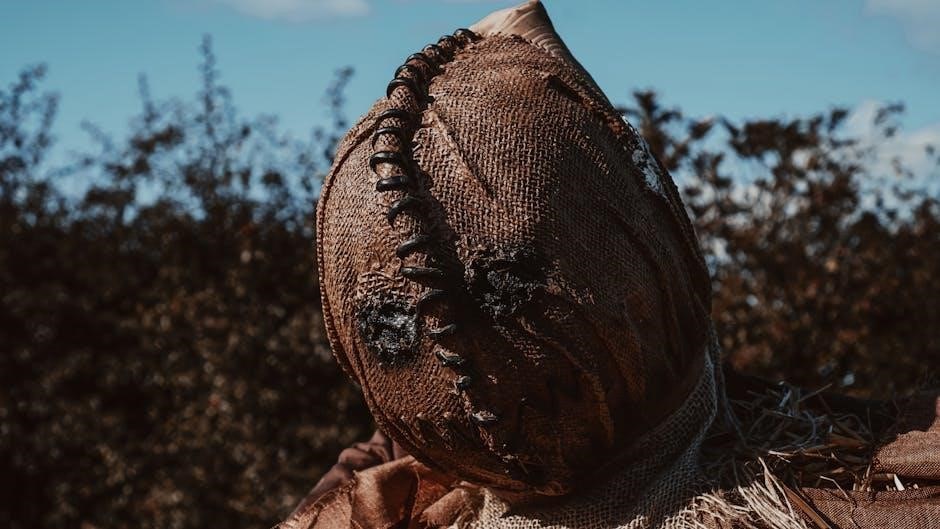
1.2 Importance of Choosing the Right Stitches
Selecting the right needlepoint stitches is crucial for achieving the desired aesthetic and durability of your project. Different stitches provide varying levels of thread coverage, texture, and visual appeal. Choosing appropriate stitches ensures structural integrity, especially for large or intricate designs. Proper stitches prevent issues like loose threads or uneven surfaces. They also enhance the overall appearance, making designs stand out. PDF guides often emphasize stitch selection, offering insights to help you make informed decisions. By mastering stitch choices, you can create professional-looking needlepoint projects that are both beautiful and long-lasting.

Basic Needlepoint Stitches
Mastering basic needlepoint stitches like Tent, Continental, and Basketweave is essential. These versatile stitches are perfect for backgrounds and details, offering a solid foundation for any project. PDF guides provide clear instructions, making them ideal for beginners and experienced stitchers alike to learn and refine these fundamental techniques.
2.1 Tent Stitches
Tent stitches are a cornerstone of needlepoint, offering simplicity and versatility. They include the half-cross, continental, and basketweave stitches, all appearing identical on the front but differing in thread usage and canvas coverage. Ideal for beginners, these stitches are perfect for backgrounds and details. PDF guides provide detailed diagrams and step-by-step instructions, making it easy to learn and master these essential techniques. Whether you’re stitching a small motif or a large background, tent stitches are a reliable choice to ensure your project looks professional and well-crafted.
2.2 Continental Stitch
The continental stitch is a versatile and popular needlepoint stitch, ideal for both beginners and experienced stitchers. It works well in multiple directions—horizontally, vertically, or diagonally—making it perfect for detailed work like letters or images. Unlike the half-cross stitch, the continental stitch offers medium thread usage and coverage on the canvas back. Its consistency and ease of use make it a favorite for stitching backgrounds and motifs. Many stitchers prefer it for its reliability and professional finish. PDF guides often highlight this stitch as a must-learn technique, providing clear diagrams and step-by-step instructions.
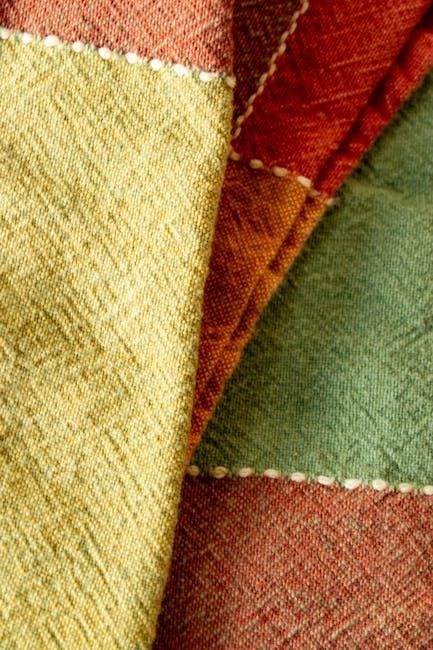
2.3 Basketweave Stitch
The basketweave stitch is a popular choice for needlepoint backgrounds due to its durability and attractive texture. It uses the most thread among tent stitches, providing exceptional coverage and longevity. Stitched in diagonal rows from top right to bottom left, it creates a woven-like pattern. Ideal for larger areas, the basketweave stitch is straightforward once mastered. Many stitchers find it relaxing and efficient, especially for projects requiring a sturdy and visually appealing background. PDF guides often include detailed instructions and diagrams to help learners master this stitch, making it a great addition to any needlepoint project.
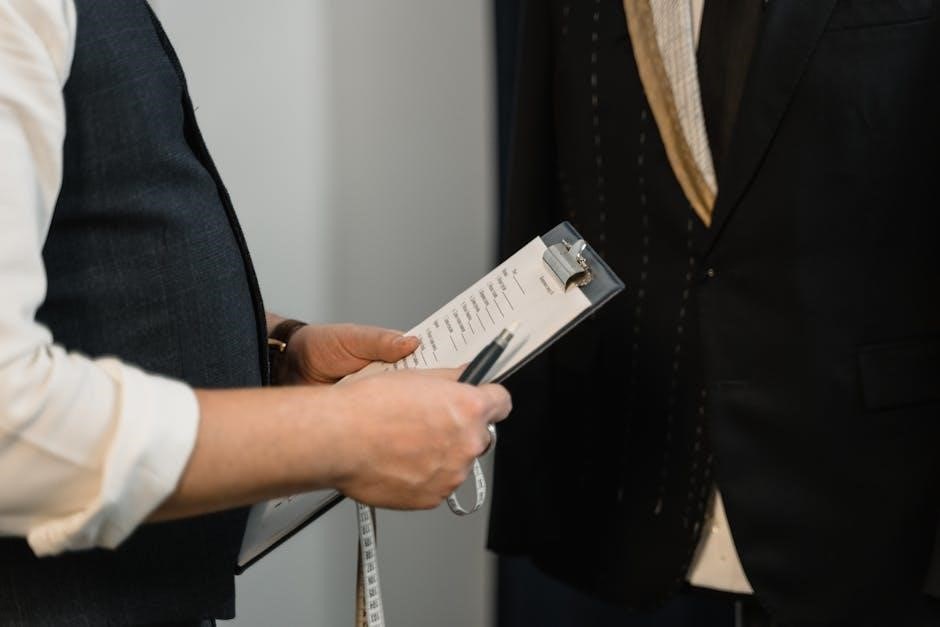
Advanced Needlepoint Stitches
Advanced needlepoint stitches, like mosaic and combination stitches, offer intricate designs and texture. They require precision and more thread but add depth and visual interest to projects. PDF guides provide detailed tutorials for mastering these stitches, enhancing creativity and skill.
3.1 Mosaic Stitch
The mosaic stitch is a versatile and visually striking technique in needlepoint. It involves creating small, evenly spaced squares or blocks of color that together form a larger design. This stitch is ideal for detailed work and can mimic the appearance of mosaics in art. The mosaic stitch is particularly useful for adding texture and depth to backgrounds or motifs. It is also adaptable, as stitchers can modify it to suit various project needs. With practice, the mosaic stitch becomes a valuable addition to any needlepoint repertoire, offering endless creative possibilities for both traditional and modern designs.
3.2 Combination Stitches
Combination stitches in needlepoint are creative blends of basic stitches, designed to add texture, depth, and visual interest to designs. These stitches are ideal for intricate patterns and motifs, allowing for greater customization. For example, combining tent stitches with basketweave can create dynamic backgrounds or borders. This technique is particularly useful for experienced stitchers looking to elevate their projects. With practice, combination stitches can transform simple designs into complex, eye-catching works of art. PDF guides often feature detailed tutorials for mastering these stitches, making them accessible to stitchers of all skill levels.
Specialty Stitches
Specialty stitches, like beaded and ribbon stitches, add unique embellishments to needlepoint projects. These stitches create intricate textures and visual appeal, perfect for enhancing motifs and borders with elegance and creativity.
4.1 Beaded Stitches
Beaded stitches add sparkle and dimension to needlepoint projects. They involve threading beads onto yarn or floss and securing them with stitches. These stitches are ideal for creating intricate details, accents, or motifs, such as eyes, jewelry, or decorative elements. Beaded stitches can be used sparingly for subtle embellishments or extensively to create bold, eye-catching designs. With various bead types and techniques available, they offer endless creative possibilities. PDF guides provide detailed instructions and diagrams to master these stitches, ensuring they enhance your project beautifully;
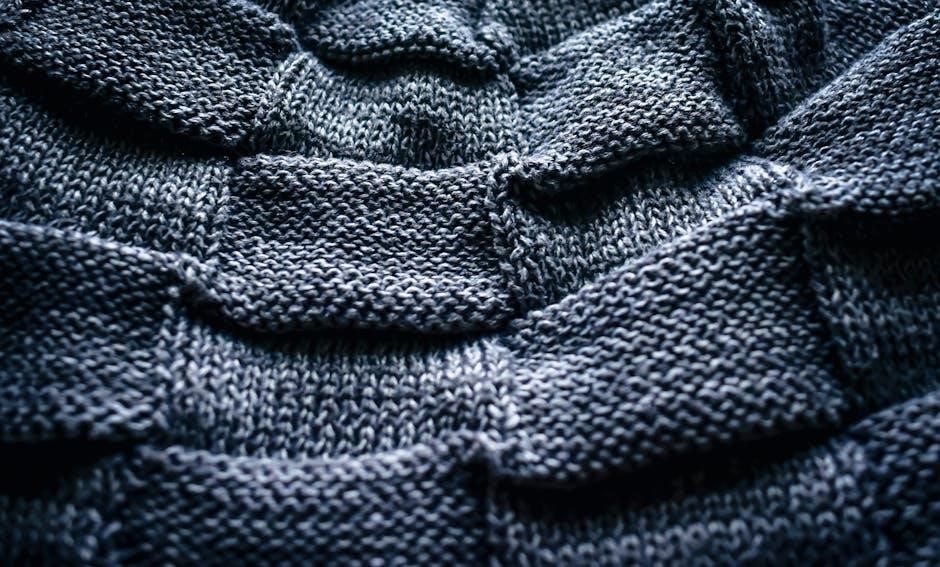
4.2 Ribbon Stitches
Ribbon stitches are a popular choice in needlepoint for creating soft, flowing designs. They are ideal for stitching flowers, leaves, and other organic shapes due to their ability to form smooth curves. Unlike traditional yarn or thread, ribbon stitches use narrow ribbons, which add a unique texture and dimension to your work. These stitches are versatile and can be used for both delicate and intricate designs. While they require a bit more care to handle the ribbon, the results are well worth the effort. PDF guides often include detailed tutorials for mastering ribbon stitches, making them accessible to stitchers of all skill levels.
Materials and Tools
Essential materials include needlepoint threads like wool, cotton, and silk, along with sturdy canvas and tapestry needles. Proper tools ensure precise stitching and a polished finish.
5.1 Choosing the Right Thread
Selecting the appropriate thread is crucial for needlepoint projects. Wool, cotton, and silk are popular choices, each offering distinct textures and durability. Wool is ideal for vibrant colors and sturdy stitching, while cotton provides a soft, classic look. Silk adds a luxurious sheen, perfect for intricate designs. Specialty threads like beads and ribbon can enhance your work. Always consider the project’s purpose and desired aesthetic when picking your thread. Using high-quality materials ensures longevity and professional results in your needlepoint creations.
5.2 Understanding Canvas Types
Choosing the right canvas is essential for needlepoint projects. Canvas types vary in mesh size and material, with options like cotton, mono-canvas, and interlock. Mono-canvas is durable and ideal for detailed work, while cotton canvas is softer and suitable for beginners. Interlock canvas minimizes thread carry-over, reducing tangles. The mesh size determines stitch visibility, with finer meshes offering more detail. Selecting the right canvas ensures a smooth stitching experience and enhances the final result. Understanding canvas types helps in achieving professional-looking needlepoint designs tailored to your skill level and project goals.
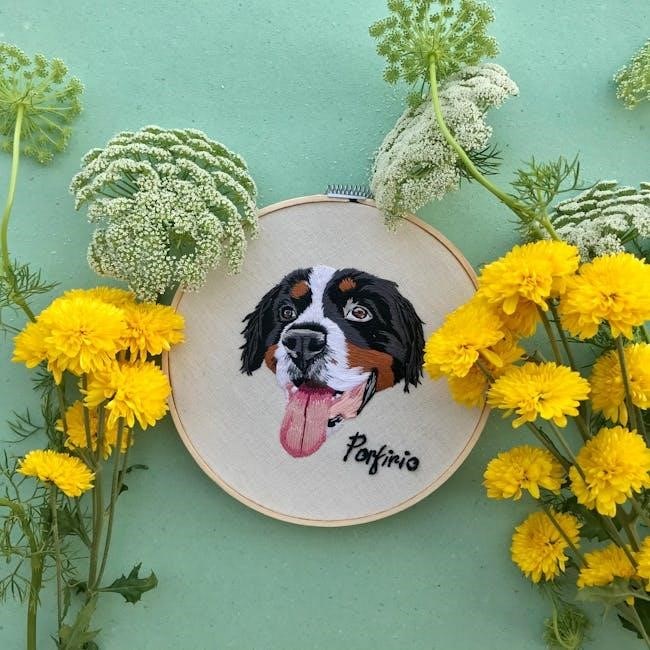
Learning Resources
Discover comprehensive guides, tutorials, and PDF downloads for mastering needlepoint stitches. These resources offer step-by-step instructions, visual aids, and expert tips, perfect for both beginners and advanced stitchers.
6.1 Top Needlepoint Stitch Guides
Top needlepoint stitch guides are essential for mastering various techniques. These guides, often available as PDF downloads, provide detailed step-by-step instructions, diagrams, and tips. They cover basic stitches like tent, continental, and basketweave, as well as advanced methods such as mosaic and combination stitches. Many guides cater to both beginners and experienced stitchers, offering clear visuals and practical advice. Popular resources include “The Complete Needlepoint Guide” by Susan Sturgeon-Roberts, which features over 400 stitches, and online tutorials from platforms like Stitch by Stitch. These tools help stitchers improve their skills and explore creative applications.
6.2 Recommended PDF Downloads
Recommended PDF downloads for needlepoint stitches are a valuable resource for stitchers. These downloadable guides offer detailed instructions, diagrams, and patterns. Popular options include “The Complete Needlepoint Guide” by Susan Sturgeon-Roberts, featuring over 400 stitches, and tutorials from platforms like Stitch by Stitch. Many PDFs cater to both beginners and advanced stitchers, covering basic techniques like tent stitches and complex methods such as mosaic and beaded stitches. They often include step-by-step visuals, making learning easier. PDFs are also portable and can be printed or viewed digitally, making them ideal for projects. They provide a comprehensive library of stitches, ensuring versatility for any design.
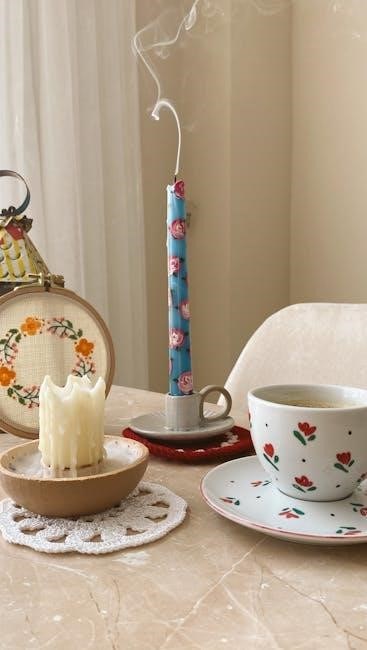
Stitch Tutorials and Videos
Stitch tutorials and videos are excellent for visual learners, covering basic to advanced techniques. Platforms like YouTube and stitching websites offer demonstrations to enhance your skills.
7.1 Step-by-Step Instructions
Step-by-step instructions are crucial for mastering needlepoint stitches, especially for beginners. PDF guides like “The Complete Needlepoint Guide” by Susan Sturgeon-Roberts offer detailed tutorials, covering basic stitches such as the Tent, Continental, and Basketweave stitches. These guides often include diagrams and illustrations, making it easier to understand stitch directions and thread placement. Many resources, such as those found on stitchedmodern or satsumastreet.com, provide downloadable PDFs with structured lessons. These guides also cover advanced techniques like the Mosaic Stitch and Combination Stitches, ensuring a comprehensive learning experience. By following these instructions, stitchers can progress smoothly from simple to intricate designs, enhancing their skills with each project.
7.2 Visual Learning Tools
Visual learning tools are invaluable for mastering needlepoint stitches. Videos and tutorials provide demonstrators in real-time, making complex stitches easier to understand. Platforms like YouTube offer channels dedicated to needlepoint, showcasing step-by-step demonstrations of stitches such as Tent, Continental, and Basketweave. Additionally, PDF guides often include diagrams and images, allowing stitchers to follow along visually. Websites like stitchedmodern and satsumastreet.com provide downloadable resources with clear illustrations. These tools cater to different learning styles, ensuring that both visual and hands-on learners can grasp techniques effectively. They are especially helpful for understanding intricate stitches like the Mosaic Stitch and Combination Stitches.
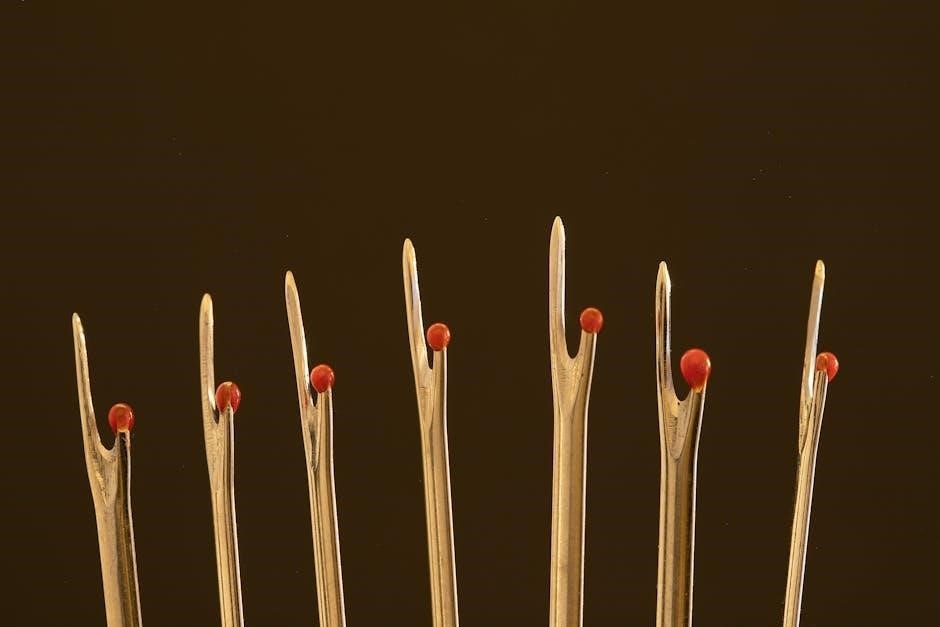
Troubleshooting Common Issues
Common issues in needlepoint include uneven stitches and thread tangles. PDF guides offer solutions, such as adjusting stitch tension and using laying tools to manage threads effectively.
8.1 Fixing Uneven Stitches
Uneven stitches can detract from your needlepoint project’s professionalism. To fix this, PDF guides suggest checking stitch tension and direction. Ensure all stitches align uniformly for a polished look. Adjusting thread length and using a laying tool can also help achieve consistency. Regularly inspecting your work and making minor adjustments prevents larger issues. Proper technique, as demonstrated in tutorials, is key to maintaining even stitches. With practice, you’ll master the uniformity needed for stunning needlepoint designs.
8.2 Avoiding Thread Tangles
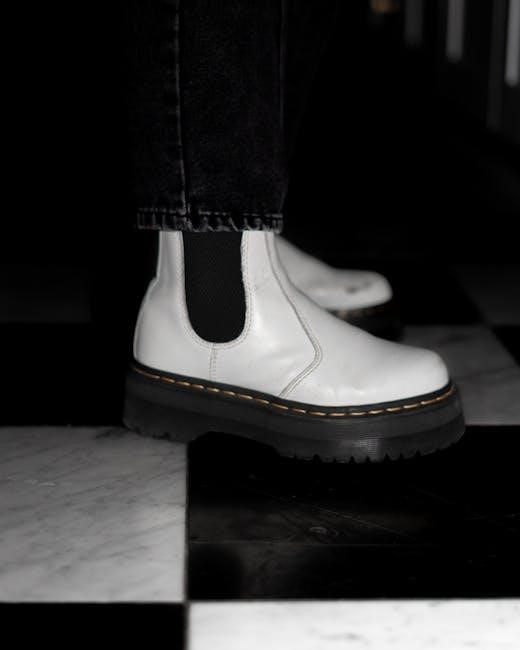
Thread tangles can frustration and waste time during needlepoint projects. To prevent this, always cut threads to the recommended length and avoid pulling them too tightly. Using a laying tool helps manage threads smoothly. Store threads in a small container or on a thread card to keep them organized. Regularly winding excess thread onto a spool or cardboard reel also minimizes tangling. For silk or specialty threads, consider using a thread conditioner to reduce friction. By implementing these tips, you can stitch seamlessly and maintain a stress-free workflow. Proper thread management is key to enjoying your needlepoint journey.
Creative Applications
Needlepoint stitches unlock endless creativity, from intricate backgrounds to bold motifs. Use mosaic stitches for texture or continental stitches for smooth, even coverage. Experiment with beads and ribbon for unique designs that elevate your projects.
9.1 Background Fills
Background fills in needlepoint are essential for creating a cohesive design. Stitches like basketweave and continental are ideal for large areas, offering durability and a smooth finish. Tent stitches, including half-cross and continental, provide versatility and coverage. For texture, mosaic stitches add depth, while beaded or ribbon stitches can add sparkle. PDF guides often feature step-by-step instructions for these techniques, ensuring even coverage and a professional look. Proper background fills enhance the overall design, making motifs stand out. Experiment with different stitches to find the perfect balance for your project.
9.2 Intricate Design Motifs
Intricate design motifs in needlepoint require precision and creativity. Stitches like mosaic and combination stitches are perfect for detailed patterns, allowing for texture and depth. These techniques enable the creation of complex shapes and motifs, from floral patterns to geometric designs. PDF guides often include tutorials for mastering these stitches, with diagrams to help visualize the process. By combining different stitches and threads, you can achieve stunning, one-of-a-kind designs. Intricate motifs add a personal touch to projects, making them truly unique and visually captivating. This level of detail elevates needlepoint from a hobby to an art form.
Mastering needlepoint stitches opens a world of creative possibilities. With practice and exploration, you can transform simple canvases into breathtaking works of art. PDF guides offer invaluable resources for continued learning and inspiration.
10.1 Encouragement to Practice
Consistent practice is key to mastering needlepoint stitches. Even a few minutes daily can lead to significant progress. PDF guides offer clear tutorials, helping you build confidence and skill. Celebrate small victories, like completing a stitch or finishing a section, to stay motivated. Every project, no matter how simple, is a step toward creating beautiful needlepoint art. Embrace challenges as learning opportunities and remember, patience and persistence yield stunning results. Let each stitch inspire you to continue exploring this rewarding craft.
10.2 Exploring New Techniques
Exploring new needlepoint techniques keeps your craft fresh and exciting. Advanced stitches like mosaic and combination stitches can elevate your designs. PDF guides and tutorials provide detailed instructions, making it easier to experiment. Don’t be afraid to venture beyond basics—each new technique expands your creative possibilities. Practice and patience will help you master intricate patterns. Continuous learning ensures growth, keeping your needlepoint projects engaging and rewarding. Embrace challenges and enjoy the journey of discovering what works best for you, as every stitch tells a unique story in your artistic journey.
